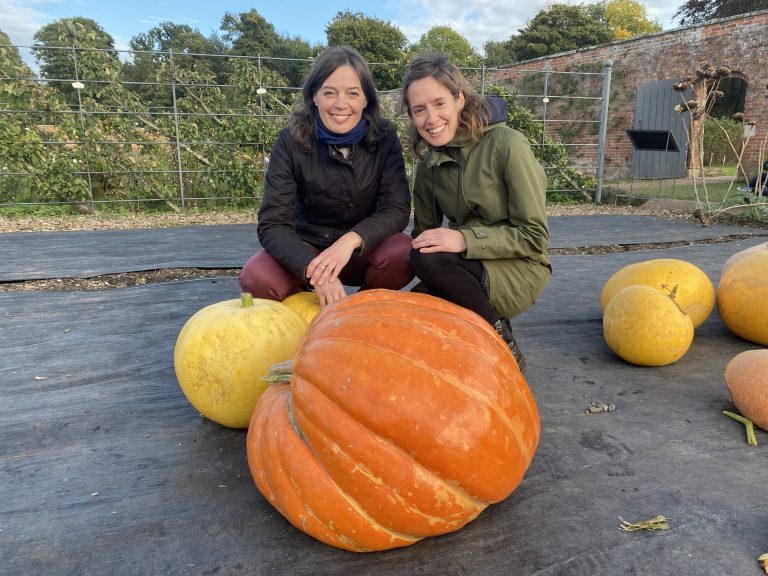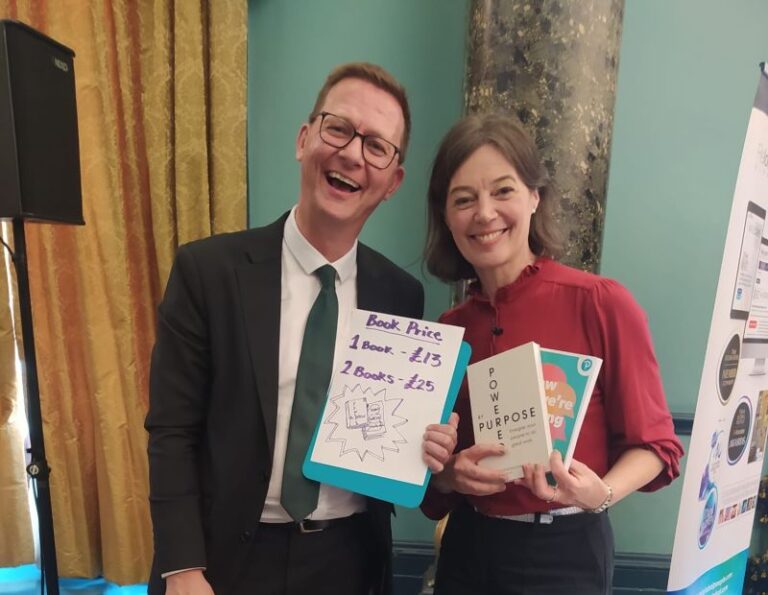
“It’s at the juncture where organizational purpose and individual calling start to resonate with and reinforce each other that truly extraordinary things happen.”
(Frederic Laloux, Reinventing Organizations)
Co-authored with Edward L. Rowland
This post explores how we can tap more fully into personal purpose and organizational purpose, so that they align with and resource each other. When we bring these powerful and compelling impulses together, we create inspiring organizations where people love to work and attract customers who are energized by what’s on offer.
During these times of turbulent change, many of us want to discover our true work in this troubled world of ours. Having the courage to follow this deeper impulse is the key that unlocks the door to our deeper fulfillment and creativity – renewed engagement with our work and career and a stronger sense of satisfaction with our lives.
Research shows – very simply – that people who follow a calling in their work have better life outcomes than those who don’t. A recent study underwrites the psychological and physical benefits of following our passion even more clearly. Writing in the most recent edition of the Research Digest of the British Psychological Society, Alex Fradera concludes, “Ignoring a calling hurts you.”
Alongside this search for personal meaning, a growing ‘business case for purpose’ – researched by Said Oxford, Harvard, EY and others – shows that purpose-led organizations have greater customer loyalty, employee engagement and agility to deal with the unexpected. Their authentic purpose, attuned to the changing realities of a globally networked world, aligns strategy, spurs innovation and provides competitive differentiation.
THE THREE ADVENTURES
In our work with leaders and their organizations, we increasingly use the metaphor of “Three Adventures” to describe the leadership that is needed during these days of disruptive change. The root of the word leadership, ‘Leith’, means to cross a threshold. Each adventure involves going forth on a journey. These Three Adventures, explored together, enable individuals and organizations to find their passion and right place in the world.
1. Stepping into Personal Purpose: The First Adventure
Sensing into the future that wants to emerge is where the journey to greater fulfillment starts. Attuning and aligning to the “work that is ours to do” requires our hearts and minds to be wide open to what life is calling us to do.
Global thought leader Otto Scharmer calls our vocational potential our ‘Work’ with a capital W. He notes that seeking to find the deepest source of our creative expression in the world is the archetypal journey of the Grail Quest. It involves moving courageously into the unknown.
There is a risk that this call to adventure can sound rather grand and heroic. In our view, however, much of what is required is more about how we are than anything that we do. To discover our Work, we must be present to inner and outer worlds rather than consumed by our busy-ness.
This active receptivity enables us to be in touch with our inner promptings, which often show us the next step on our journey. Noticing the restlessness inside that says, “Leave this job”, or the excitement that stirs us to set up our own business is one way that our path shows itself to us. As author Parker Palmer put is:
“Before you tell your life what you intend to do with it, listen for what it intends to do with you…vocation does not mean a goal I pursue. It means a calling that I hear…a gift to be received”.
This First Adventure is inherently relational as well as deeply personal. It’s a journey that we inevitably make with others, as we move in and out of the professional systems to which we belong, gathering the skills and capacities we need, and leaving behind that which no longer calls us.
2. Attuning to Evolutionary Purpose: The Second Adventure
We have explored in a related article (Cultures of Purpose: Developing Systemic Leadership) some of the skills and capacities of leading purposeful organizations, including crystallising potent purpose.
When organizations attune to their purpose, it creates alignment. Resources are well deployed, people are energized and decision-making becomes easier as a shared mission makes it clear whether an activity is on purpose or not.
Moreover, a powerful purpose provides an energetic wellspring for an organization, both internally and externally. In our work creating living, systemic maps, we see time and time again that attuning to the true purpose of organization enables a powerful flow of leadership through the system. This “authorizing” of work, or even Work, enables everyone to row in the same direction, and serve the customer’s real needs.
We acknowledge that this ongoing task of attuning to purpose can be very challenging. Purpose is not static but shifts over time with upheavals in the marketplace, upturns (or downturns) in consumer opinion and changes to the top leadership team. This shifting landscape might quickly activate those dynamics – which as our colleague Jan Jacob Stam puts it – “can in one moment, give us wings to fly and in another moment, hold us paralysed and unable to act”.
Leaders often seek to move forward and innovate, but sometimes do so at the cost of ignoring the past. When the history of a system is not sufficiently included – for example, the founders are forgotten or colleagues leave with unfinished business – there is a stuckness that impedes powerful progress. On the other hand, leaders can be caught in the past, by being wedded to founding or espoused expressions of the purpose that do not light up staff or customers.
Frederic Laloux’s expression of “evolutionary purpose” is another way to understand this Second Adventure. The twelve truly pioneering organizations that he studied achieve extraordinary results not by trying to steer the organization onto a certain course through five-year plans or tough targets, but through listening to where the organization is meant to go. They constantly adapt their plans to the reality of the marketplace by listening, individually and collectively, to where the organization’s energy is and wants to go.
This active receptivity at an organizational level becomes less mysterious if we think of an organization as a living system with its own sense of direction and creative genius. Laloux gives the example of how a home care organization, Buurtzorg, in the Netherlands expanded its purpose, inspired by staff working on the ground. Nurses treating patients in the local community noticed that they could add value by working with physiotherapists to prevent accidents and not just deal with the consequences of falls. “Let’s listen to the energy in the system” was the stance of the CEO, after hearing the nurses, which led to the organization naturally heading down the path of refining its “evolutionary purpose.”
3. Creating Alignment between Personal and Organizational Purpose: The Third Adventure
This Adventure involves discerning how personal purpose and organizational purpose can mutually amplify each other. When we work for an organization whose mission aligns with our own, we bring our whole selves to our work – our caring, daring selves as well as our professional skillset.
Having our personal and organizational purpose support and strengthen each other is an Adventure that goes in two directions (and leaders need to understand both perspectives).
Firstly, an organization can enable individuals to be more on purpose with themselves by putting in place practices such as:
- Purpose-led recruitment to create alignment from the beginning. This is a growing field that is, in part, a response to the search by “millennials” or younger people entering the workforce for work that has an impact beyond making money.
- Giving stretch assignments, where people can experience “flow” in their work and apply themselves to new challenges, which fully absorb their attention and expand their capacity in meaningful ways.
- Providing practices for individuals to attune to personal purpose (as well as contribute their wisdom around the unfolding call of their team or organization, as described above). For example, giving people structured reflection time, enabling them to have career-enriching conversations with mentors and allowing people to share their ideas for expanding their work with colleagues, senior leaders and other stakeholders.
From the individual’s perspective, this third Adventure can be viewed as an ongoing inquiry to discern how the purpose of your organization can best resource you, and how you can best contribute to it. This can involve:
- Engaging in active dialogue with your current organization – or prospective employers – to “find a good home for your personal calling”.
- Being willing to take risks by speaking out, creating prototypes and sharing ideas that you sense will move you and the organization into a new space.
- Taking responsibility to move on when your work and learning is done and your passion is taking you elsewhere.
Our Practice
In our consulting and coaching work we support leaders to take an embodied approach to crystallise – and align – organizational and personal purpose by helping them to create living maps of the systems in which they work. These maps generate profound insights about the movements that are needed to bring business purpose and customer needs – as well as individual and organizational mission – closer together.
Working at these critical intersections can often unlock a wellspring of energy, inspiration and momentum that have not been tapped into before. The emerging next steps are those that strengthen the system as a whole, for example, by creating a stronger offer for customers, by building trust between stakeholders or letting go of things that are no longer needed.
IN CLOSING
In sharing our practice and thoughts about the Three Adventures, we are often struck by how purpose-led leadership calls us to listen more deeply to ourselves, to each other, to our customers and to the emerging future of life itself.
This requires a particular kind of stance, where we ‘sit back’ with greater presence and active receptivity, rather than rushing to make our planned futures happen. By illuminating the dynamics of these core relationships through systemic maps – and by having a different kind of generative conversation – we can attune to our Work and what is ours to do in the world.
If you are interested in exploring our way of working, we are running a programme on Stepping into Personal Purpose Programme (June 19-21, 2017) in London.
References
Research Digest by the British Psychological Society:
http://digest.bps.org.uk/2016/01/listen-to-your-heart-having-unanswered.html
Q&A with Frederic Laloux, author of Reinventing Organisations:
http://www.infoq.com/articles/book-reinventing-organizations







Great!